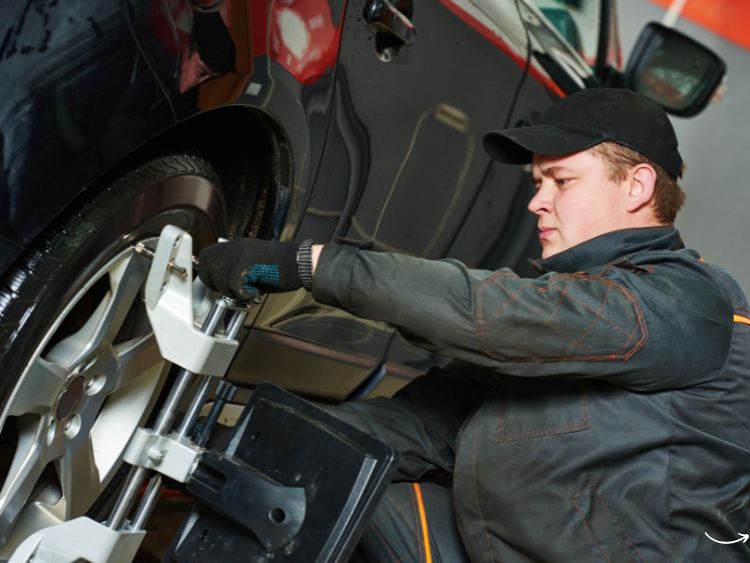Why Automotive Lifts Are a Must-Have
Ever struggled with getting under your car to inspect a problem or complete repairs? Let’s face it—jacking up a car manually isn’t just inconvenient; it’s downright risky if not done correctly. That’s where automotive lifts come into play. These mechanical marvels have revolutionized the way mechanics and DIY enthusiasts work on vehicles. Whether you’re running a professional auto shop or maintaining your personal vehicle, investing in an automotive lift can save you time, effort, and, let’s not forget, your back!
But before you jump headfirst into buying one, let’s explore the ins and outs of automotive lifts. What types are available? Which one is right for your needs? Buckle up, because we’re diving deep into the world of automotive lifts.
What Is an Automotive Lift?
In simple terms, an automotive lift is a device designed to elevate a vehicle off the ground, making it easier to access its undercarriage. They’re commonly used in repair shops, garages, and even by hobbyists who love tinkering with cars. But don’t think they’re all the same—automotive lifts come in various shapes, sizes, and functionalities.
Benefits of Using an Automotive Lift:
- Improved Safety: No more worrying about unstable jacks or crawling under a precariously propped-up car.
- Enhanced Efficiency: Perform inspections, oil changes, and repairs faster.
- Space Optimization: Some lifts even double as storage solutions, letting you park another car underneath.
- Versatility: Handle everything from compact cars to heavy-duty trucks, depending on the lift.
Types of Automotive Lifts: Finding the Right Fit
When it comes to automotive lifts, one size doesn’t fit all. Here’s a breakdown of the most common types and what they’re best suited for.
1. Two-Post Lifts
Two-post lifts are a favorite in auto repair shops. They consist of two sturdy columns with arms that lift the vehicle by its frame.
Pros:
- Affordable compared to other types.
- Great for accessing the entire undercarriage.
- Compact design saves floor space.
Cons:
- Requires proper floor anchoring.
- Not ideal for very heavy vehicles.
Best For: Professional mechanics and small garage owners.
2. Four-Post Lifts
Four-post lifts are the heavy-duty cousins of two-post lifts. With four columns, they provide a more stable platform.
Pros:
- Higher weight capacity.
- Easier to use—no need to balance the car.
- Ideal for long-term vehicle storage.
Cons:
- Takes up more space.
- Typically more expensive.
Best For: Large repair shops and vehicle storage enthusiasts.
3. Scissor Lifts
These lifts use a scissor-like mechanism to raise vehicles. They’re compact and portable, making them a hit among hobbyists.
Pros:
- Portable and space-saving.
- Easy to operate.
- Affordable.
Cons:
- Limited lifting height.
- Restricted access to certain parts of the undercarriage.
Best For: DIYers and occasional users.
4. Portable Lifts
Portable lifts, as the name suggests, can be moved around easily. They’re perfect for those who need flexibility.
Pros:
- Lightweight and easy to store.
- Ideal for temporary setups.
Cons:
- Lower weight capacity.
- Limited lift height.
Best For: Mobile mechanics and hobbyists.
Key Features to Look for in an Automotive Lift
Not all lifts are created equal, so what should you keep an eye out for when shopping?
- Weight Capacity: Always choose a lift that can handle the heaviest vehicle you own.
- Lift Height: Consider how high you need the vehicle to be raised for comfortable work.
- Durability: Look for sturdy materials and a trusted manufacturer.
- Safety Features: Anti-sway devices, locks, and stable platforms are non-negotiable.
- Ease of Use: If it’s a hassle to operate, you won’t use it as often as you’d like.
- Space Requirements: Make sure your garage or workspace has enough room.
Installation and Maintenance Tips
Installing and maintaining an automotive lift isn’t as complicated as it sounds, but there are a few things to keep in mind.
Installation:
- Prep Your Space: Ensure your floor is level and strong enough to support the lift.
- Follow Instructions: Use the manufacturer’s guide religiously.
- Hire Professionals: If in doubt, let the pros handle it.
Maintenance:
- Regular Inspections: Check for wear and tear, especially on moving parts.
- Keep It Clean: Remove grease and debris to prevent malfunctions.
- Lubricate Moving Parts: This keeps the lift running smoothly.
- Test Safety Features: Always ensure locks and other safety mechanisms are functioning.
FAQs About Automotive Lifts
- Can I install an automotive lift at home?
Yes, but you’ll need enough space and a solid floor. Always check the lift’s specifications and consider professional installation if needed. - How much does an automotive lift cost?
Prices vary widely, from around $1,500 for basic models to over $10,000 for high-end options. - Are automotive lifts safe to use?
Absolutely, as long as they’re properly installed and maintained. Always follow safety guidelines. - Do I need a special license to operate a lift?
No, but proper training and familiarization with the equipment are crucial. - What’s the lifespan of an automotive lift?
With regular maintenance, most lifts can last 15-20 years or more.
Conclusion: Is an Automotive Lift Worth It?
In a word: Yes! An automotive lift is a game-changer for anyone serious about vehicle maintenance or repair. Whether you’re a professional mechanic or a car enthusiast, the convenience, safety, and efficiency they offer are unmatched. Just make sure you pick the right type for your needs and keep it well-maintained.
Authoritative Links:
- Automotive Lift Institute: www.autolift.org
- National Automotive Service Task Force: www.nastf.org
- OSHA Guidelines for Vehicle Lifts: www.osha.gov

